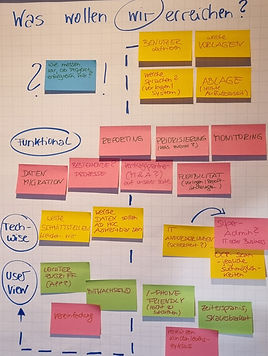
...but every step counts
we don't have groundbreaking ideas...
contractmanagement. to see light at the end of the funnel!
we want to uncover the myth of contract management lifecycle system (CMLS) and
show on when you should set the course
for the implementation of a CMLS and
and help you to focus on the essentials during that phase.
in my role as general counsel at transporeon gmbh,
I work together with external consulting firms.
our requests have one thing in common:
optimization.
what the consultants' approaches have in common:
the focus is on solutions that can be implemented quickly.
issues that can only be implemented over a certain period of time are left behind as “homework”.
and this creates a discrepancy between
what the company can actually achieve
and the constructive ideas from its own ranks.


that is why angaschmo. develops solutions with you that focus on the long-term success of the company.
when it comes to the question on
when the implementation of a contract management system becomes relevant at all, in my consulting practice this first means to set the ground.
- what are the company's goals,
- should additional markets be developed,
- is organic growth an issue?
- what resources are available,
- what services are already being purchased?
the initial question is not whether CMLS or not.
moreover, it is about determining and defining
- which contract types and documents are available,
- if they need optimization,
- who should have access to them and, in particular,
- how the information from the documents should reach the executing departments.
the solution can be a practicable filing system, dedicated persons responsible for
- initial data entry and other for
- data correction within the customer cycle.
proper filing is the key to any future contract management system.
before taking a step towards CMLS, clarify what the
objective of such a system should be.
- are there processes that need to be simplified or accelerated?
- or do reporting requirements need to be met?
ultimately when information is passed on inadequately or when there is
no overview of the churn rate, action should be taken.
the challenge is not to transfer the existing process 1:1 into a new system,
but to compile the requirements visionary and questioning such.
it therefore requires an
- interdisciplinary team that is both
- critical and
- forward looking at the same time.
to define this, I use colorful post-it notes in my workshops, hands-on is key.
no idea is wrong. on the contrary:
the more supposedly abstract ideas emerge, the more they are discussed.
in this way, a common vision is created that everyone supports.
in addition to
- sufficient capacity,
- regular internal coordination coordination and the
- courage to question things, it is also important to
- constantly see the other side. “put yourself in other shoes”.
what do the other departments think,
how are the changes received there,
what else needs to be considered?
how do you manage to guide through the change and ultimately
how to not only receive a reliable database that is easy to evaluate,
but also to maintain it on the long run and create
value for the whole organization.
last but not least - take an ambitious approach to the project,
introduce small milestones so that the team can also
celebrate successes. such a project is not done over night and -
be prepared for this marathon.
we guide you.
Quelle: 6th Edition THE GROW* magazin
*ist das führende, schnellstwachsende und innovativste Netzwerk für Unternehmer:innen in Europa, das innovative Ideen und Austausch fördert.


Source: 5th edition THE GROW* magazine
* is the leading, fastest - growing and most innovative network for entrepreneurs in Europe, promoting innovative ideas and exchange.
